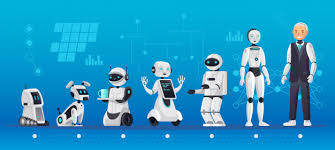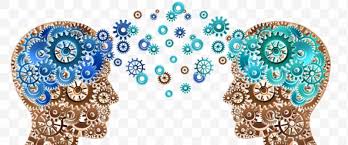What are the different types of Artificial Intelligence? And how does the media influence how Artificial Intelligence is perceived?
As I discussed in my previous blog, Elon Musk has made many public statements about his concerns and fears concerning Artificial Intelligence.
However, during the writing of that piece, it occurred to me that a lot of people do not understand what AI really is, given the different types being discussed in academic, governmental and business circles.
The general public (and I include myself in this category) base their ideas on news, film and other media, which might use generalised terms to describe intelligence within an automated system, regardless of whether this is a computer on a desk or a robot that walks and feeds the dog.

So it falls to us, as well as those in the media, as proponents of the technology to better enlighten people about the differences and definitions.
We need to start with the differences between Science Fact, Science Possible and Science Fiction. The fictitious ‘Terminator / Skynet’ and ‘I-Robot’ technologies are portrayed as indistinguishable from today’s authentic pattern recognition systems that can design drugs, call attention to ‘persons of interest’ in a crowded area, or identify cancerous cells within an image. Yet these are reported in the media as AI.
While this blog is primarily about Technological Unemployment, we cannot ignore the fact that AI is one of many other factors that will continue to impact peoples’ careers.
The acceptance and use of AI in the workplace and society may be governed by people’s perceptions of what AI is and how it can be used, what it can and cannot do and how it will affect their jobs.
When people are informed and understand new technologies they are less anxious, more comfortable and therefore more accepting of technological changes, in particular, AI – how it could be used outside the office environment, and how it could be used within the organisation they work for, and in their jobs in particular.
As I discuss the different types of AI I will, as has become the generally accepted norm, use the Human as a measure both in brain functionality, physical ability and form.
Types of AI
Since the 1980s AI has been discussed in every media from the academic to the ridiculous,
Which has diluted and divided the original definition to leave a multitude of interpretations, not all of them based on reality.
So what are the different types of Artificial Intelligence?
There are generally accepted types of AI, although some could be considered as stepping stones to actual Artificial Intelligence.
- Reactive;
These are automated solutions that could be seen as the forerunners of AI. However, they cannot think, reason or work outside the parameters that have been given. They cannot remember the choices they have made in the past and the impacts of those choices. They can only react to a stimulus using pre-programmed rules within boundaries – think IBM computers playing chess. The human opponent makes a move but can remember the possible impacts of that move, and the computer (Reactive automated solution) will shift through multiple sets of possible moves in response. It is not thinking, but applying the rules and possibilities in a rule-based algorithm.
- Limited Memory Machines or Artificial Narrow Intelligence (ANI);
These are similar to the ‘reactive’ type of AI systems but have a limited ability to learn from the training data provided to them. Therefore they can make decisions based on that data, and the training they have undergone. This is an Intelligence that works within narrow boundaries, and is the most frequently reported form of AI in the media.
For example, these news reports on the BBC and CNN,
‘Artificial Intelligence is used in the diagnosis of breast cancer’ (O’Hare, 2020) the system can detect cancer by analysing X-rays and identifying cancerous cells in the image. This is the type of AI that seems to be most widely reported in the media, as just AI.

‘AI-created medicine to be used on Humans’ (Wakefield, 2020). A drug was designed and tested using the information given to the system (Computer models). According to the news report, It is now ready for trials, in line with the medical authorities and scientific requirements. This was done a lot faster than human medical scientists could have done, but time will tell whether this is an efficient use of the technology.

‘AI assists in detecting wildfires’ (Metze, 2019). This is another pattern recognition AI solution, that analyses images taken by a drone, looking for specific patterns within the images that could represent a fire.

All of these solutions are pattern recognition systems. The automation may be faster and more accurate than human abilities, but is it intelligence? Or is it the very fast comparison of images with predefined criteria or base (training) data?
- Theory of Mind;
This is potentially one of the next steps in AI evolution, AI that can better understand the entities it interacts with – understanding their needs, beliefs, emotions and thought processes. To understand human needs, the AI system must understand that humans are individuals, and therefore can interact with us and attend to the requests we give it.

- Artificial General Intelligence (AGI);
This is automated, or computerised intelligence, that can learn, perceive, understand and function like a human being. There is an assumption here that intelligence visually resembles us, it walks and moves like a human being. This is more like the robot (entity) that we understand from science fiction, a robot (entity) that can cook, clean, drive the kids to school, even teach the kids, learn from errors, and move through society like a human being. But this is a robot (entity), that can ‘think and reason’ and possibly ‘act’ like a human. Does this robot or entity make mothers redundant? The taxi driver, the astronaut, the shopkeeper, or the postman – could these people become unemployed?
This is the type of AI that most people are aware of through films such as I-Robot and Terminator.
But these types are not my main concern, as they are robotic as well as intelligent. I am more concerned with the office clerk, the administrator, the project manager, and people who perform office-based roles. How might AGI replace them?
- Self Aware;
‘Skynet’ (and Saturn 3, for those a little older) depicts automated intelligence that can explain itself and has an intellect that acts and thinks like the human brain. It is able to evoke emotions in those it interacts with as it has its own emotions, beliefs, needs and wants.
This author thinks that this is the last stage before Artificial Super Intelligence, and at this time is a long way off. I believe we need to understand our own intelligence, responses and brain functionality better before we can create intelligence like ours.
(Here’s an entertaining thought – would an automated entity that is self-aware have rights? Should it? This is a debate for the technological philosophers and, at some point perhaps, legal departments or governments).
- Artificial Super Intelligence (ASI);
ASI is the objective of AI researchers – to create an automated or computer system that is more intelligent than humans, that is able to think and act faster, retain more information and, generally, be ‘better’ than us…
ASI is the holy grail of Intelligence systems, and although we are some way from that, the prerequisite stages are happening right now.
ASI as a concept is understood, but the actualities, the stages and ways of getting there are only partially known and even less well understood. There are many unknowns, assumptions and questions all of which have to be addressed and answered.
In Conclusion
These definitions are simple and well understood by those in the know, but are they understood by the general public? The more pertinent question might be, does the general public care? Would they care more if they were unemployed because an automated system (robot or computer) could do their job? – well, I think we can all agree that the answer to that question is yes.
Are we and the media portraying Artificial Intelligence in the right way? Or do we need to explain things better? Indeed, is it possible to explain things better?
Some aspects of the media are starting to explain AI better, news channels are beginning to make explanatory content. However, I think that this is the start of a long journey and that the media will change the way they report and explain AI.
Can business leaders explain how AI is going to be used within the organisations they manage in such a way that people are not threatened, or worried? More importantly, do business leaders understand AI themselves? Could they explain it in a way that reduces fear of the introduction of AI tools into the workplace?
The definitions discussed here are simple, but the media still uses AI as a catch-all term. Should we work with them to change this?
This is a very generalised view of Artificial Intelligence and the way it is reported. The subject is complex and convoluted, therefore I am unsurprised that there are more questions than answers in this blog.

However, I believe the media is capable of reporting on AI without using generalised terminology, and this is slowly beginning to happen. People could develop a more informed view of technology, and a better understanding of how it can be used both in the home, and workplace and in regards to Technological Unemployment.
Next Blog



